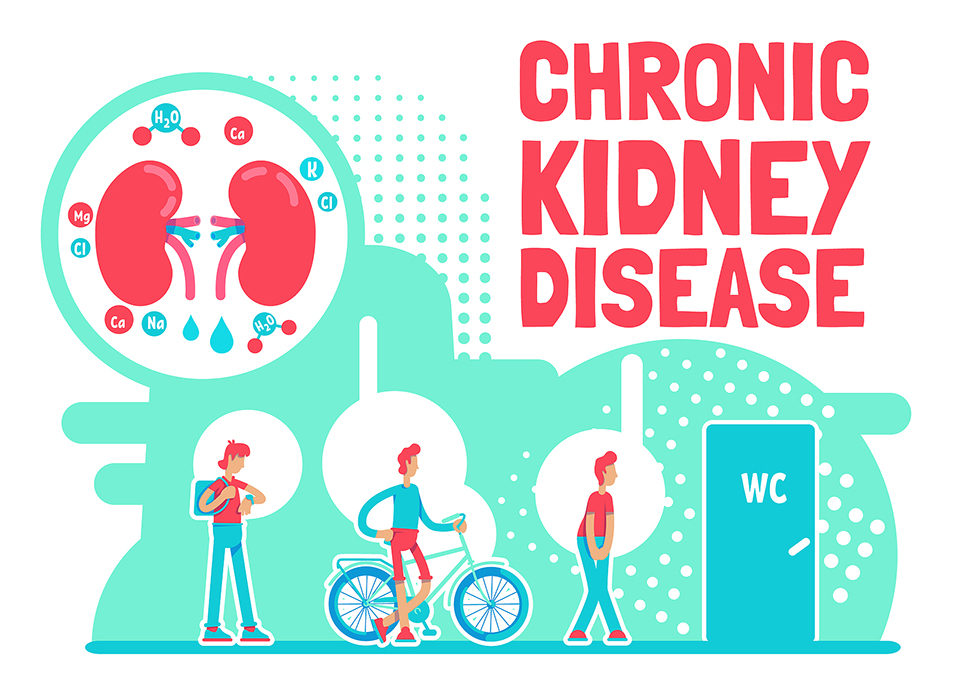 A new study in SSM – Population Health compared hundreds of neighborhoods and found a strong correlation between a specific type of neighborhood and chronic kidney disease.
A new study in SSM – Population Health compared hundreds of neighborhoods and found a strong correlation between a specific type of neighborhood and chronic kidney disease.
Some previous studies have concluded that your socioeconomic status can affect your chronic kidney disease (CKD) risk. This should not be surprising, as gym memberships, vehicle ownership to drive to health stores, and healthy food come at a cost.
Similarly, the new study goes beyond socioeconomic status and considers neighborhoods and neighborhood characteristics and their relationship with CKD.
The neighborhood characteristics of particular interest were socioeconomic status, crime rate, proximity to health food stores, walkability, and the networks of relationships among neighborhood residents (called social capital).
Their study sample consisted of 23,692 adult residents of Philadelphia across 97 percent of its neighborhoods. All of them had visited a primary care practice in 2016 or 2017.
During these visits, indicators of CKD were measured, including kidney function, poor glycemic control (defined as a hemoglobin A1c from 6.5 percent upwards), and uncontrolled blood pressure—defined as a systolic score from 140 mmHg upwards and/or a diastolic score from 90 mmHg upwards.
They made sure to prevent age, sex, race, and insurance coverage from influencing their results.
They found that only socioeconomic status—defined as a combination of neighborhood income, educational attainment, and occupation—was associated with the likelihood of CKD, with people in the poorest neighborhoods being 46 percent more likely to develop it than those in the richest neighborhoods were.
People in the neighborhoods in the middle of the socioeconomic spectrum were 35 percent more likely to have CKD than those in the richest neighborhoods.

 Overcoming IBD
Overcoming IBD Multiple Sclerosis
Multiple Sclerosis Banishing Bronchitis
Banishing Bronchitis Gum Disease Gone
Gum Disease Gone Overcoming Onychomycosis
Overcoming Onychomycosis Neuropathy No More
Neuropathy No More The Prostate Protocol
The Prostate Protocol Brain Booster
Brain Booster
 Ironbound
Ironbound
 Solution for Shingles
Solution for Shingles
 The Bone Density Solution
The Bone Density Solution
 The Ultimate Healing Protocol
The Ultimate Healing Protocol
 The Parkinson's Protocol
The Parkinson's Protocol
 The Chronic Kidney Disease Solution
The Chronic Kidney Disease Solution
 Overthrowing Anxiety
Overthrowing Anxiety The Fatty Liver Solution
The Fatty Liver Solution The Hypothyroidism Solution
The Hypothyroidism Solution
 The End of Gout
The End of Gout The Blood Pressure Program
The Blood Pressure Program
 The Oxigized Cholesterol Strategy
The Oxigized Cholesterol Strategy
 Stop Snoring And Sleep Apnea Program
Stop Snoring And Sleep Apnea Program
 The Arthritis Strategy
The Arthritis Strategy The Vertigo & Dizziness Program
The Vertigo & Dizziness Program The 3-Step Diabetes Strategy
The 3-Step Diabetes Strategy Hemorrhoids Healing Protocol
Hemorrhoids Healing Protocol The Erectile Dysfunction Master
The Erectile Dysfunction Master Weight Loss Breeze
Weight Loss Breeze The IBS Program
The IBS Program The Insomnia Program
The Insomnia Program The Migraine and Headache Program
The Migraine and Headache Program The Neck Pain Solution
The Neck Pain Solution The Menopause Solution
The Menopause Solution The Ejaculation Master
The Ejaculation Master The TMJ Solution
The TMJ Solution The Acid Reflux Solution
The Acid Reflux Solution The Fibromyalgia Solution
The Fibromyalgia Solution The Psoriasis Strategy
The Psoriasis Strategy